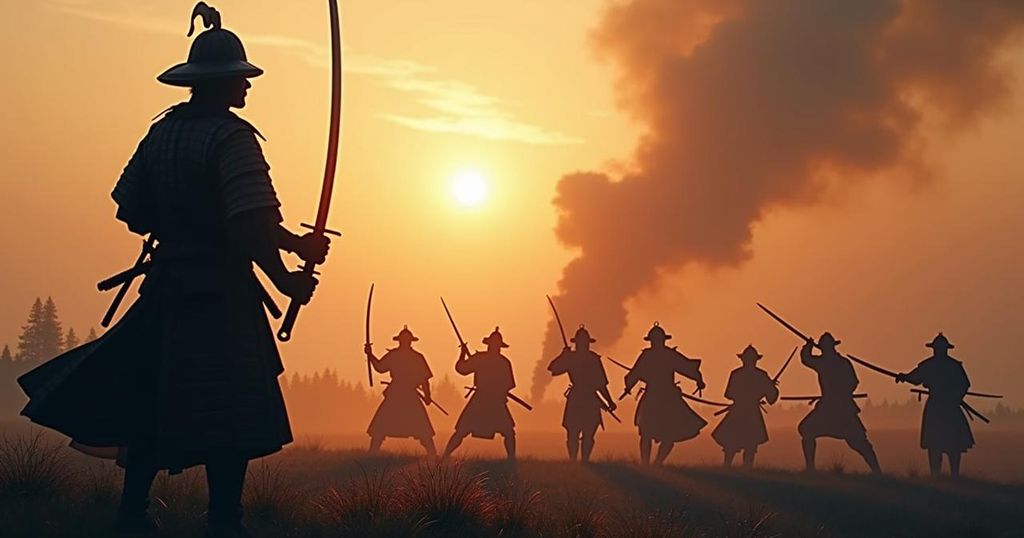Seki Nobuhide Sensei Rates Iconic Samurai Battle Scenes in Film
Seki Nobuhide Sensei, a renowned martial arts instructor, rates samurai battle scenes from films and TV shows, highlighting the accuracy and artistry behind martial techniques as seen in titles like ‘Shogun,’ ‘The Last Samurai,’ and ‘John Wick: Chapter 4.’ His critiques detail the differences in combat styles, weaponry, and armor, while also contemplating cinematic portrayals of samurai lore and skills.
In an enthralling exploration of cinematic combat, Seki Nobuhide Sensei, the esteemed martial arts and katana instructor, assesses the portrayals of samurai battles in popular films and television. His keen insights trace the evolution of martial techniques through each scene, providing a deeper appreciation for the art of the samurai. Kicking off with the epic saga of “Shogun,” Sensei explains the strategic deployment of various spear types, essential for understanding samurai warfare. Transitioning to “The Last Samurai,” starring Tom Cruise and Ken Watanabe, he delves into the intricate distinctions between samurai and ninja fighting styles, revealing the contextual philosophies behind their movements. Moving to the modern action packed “John Wick: Chapter 4,” Sensei illustrates how anticipation can turn the tides of battle, as Keanu Reeves faces formidable foes. The thrilling discussion doesn’t stop here; in “The Wolverine,” he evaluates the practicality and risks of dual wielding swords, an embodiment of both flair and functionality. In “Kill Bill: Vol. 1,” Sensei showcases the ingenious use of a chain ball to immobilize opponents, blending traditional artistry with cinematic flair. He shifts focus to “Avengers: Endgame,” where one-handed sword maneuvers take the spotlight, highlighting efficiency and precision in combat. His knowledge extends to the realm of armor in “47 Ronin,” discussing the significance and variations of samurai protective gear. With an air of reverence, Sensei reflects on how to effectively confront multiple adversaries in classics like “Harakiri” and “Seven Samurai,” starring the legendary Toshiro Mifune. Lastly, in a surprising twist, he critiques James Bond’s kendo skills portrayed in “Moonraker,” reminding viewers that even the iconic spy must bow to the traditions of combat. As the 22nd headmaster of Asayama Ichiden-ryu and a martial artist since age three, Sensei brings decades of expertise to his assessments, ensuring that each cinematic moment is punctuated with historical authenticity and artistic integrity. To delve deeper into his teachings and appreciate the nuances of swordsmanship, viewers can explore Seki’s online katana lessons.
Seki Nobuhide Sensei’s insights into samurai battle scenes arise from his extensive background in martial arts, where he has refined his knowledge over decades. As the headmaster of Asayama Ichiden-ryu, his lineage is steeped in tradition, making his perspective on the portrayal of samurai battles in film particularly valuable. His ratings of various films and shows not only highlight the aesthetics of action but also critique the accuracy of martial techniques depicted. This backdrop enriches the understanding of how samurai culture and combat are portrayed on screen, offering audiences a nuanced lens through which to appreciate these cinematic moments.
Seki Nobuhide Sensei’s captivating evaluation of samurai battles in cinema serves to illuminate the martial artistry behind each film. By dissecting the techniques and philosophies showcased in these narratives, he bridges the gap between historical authenticity and modern storytelling, allowing viewers to encounter a deeper appreciation for the samurai legacy. In doing so, he reminds us that every choreographed movement tells a story—one of honor, struggle, and the intricate dance of combat.
Original Source: www.businessinsider.com




Post Comment